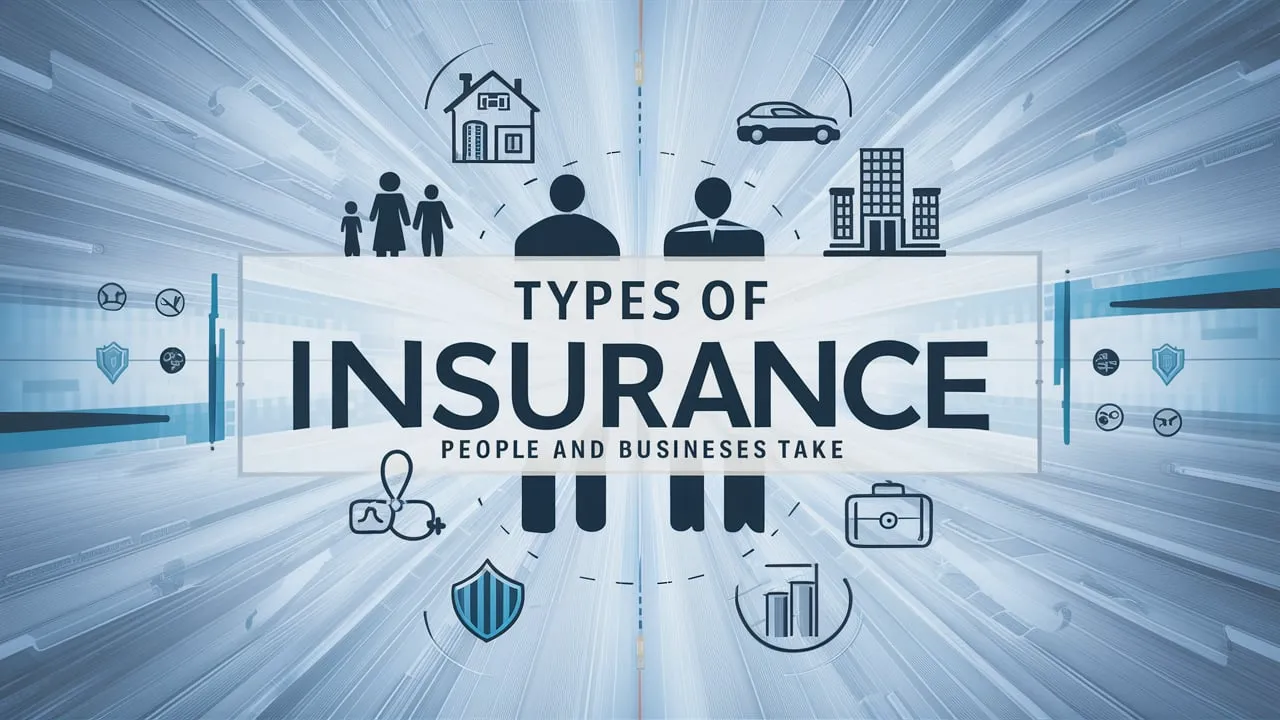Insurance buying can get confusing fast with all the policy options out there. But having the right coverage protects what matters most when life throws curveballs. In this guide we will breaks down the major types of insurance people and businesses rely on, so you can figure out what fits your situation.
Health Insurance Basics
Health insurance helps pay for care when you get sick or hurt. It’s there when you need surgery, hospital stays, trips to the doctor’s office, prescription medications, and more. Plans range from bare bones to fancy coverage.
Some common types:
- Major medical insurance – The Cadillacs of health plans with high coverage limits for worst-case scenarios.
- Hospital indemnity insurance – Gives you set cash payouts when hospitalized to help cover costs.
- Accident insurance – Extra money for injuries that need medical treatment.
- Critical illness insurance – Pays lump sums when diagnosed with serious diseases like cancer so you can tackle what comes next.
Disability Insurance: Income Backup Plan
Disability insurance pays part of your usual paycheck if injury or illness keeps you from working. It’s income protection for tough times when the bills keep coming but the next deposit doesn’t.
Kinds of disability insurance:
- Short-term – Few weeks or months off work
- Long-term – For serious stuff that goes on for years
- Whole life – Permanent life insurance plus disability coverage
Some jobs come with group disability benefits. Individual policies allow custom options too.
Life Insurance: Financial Safety Net
Life insurance creates a money pool your loved ones can access when you pass away. It secures their future without your earning power.
Main flavors include:
- Term life insurance – Coverage for set periods like 10-30 years. Costs more as you age. Good for responsibilities that phase out over time like debts and kids’ expenses.
- Permanent life insurance – Lasts whole life as long as you make payments. Types like whole life and universal life build savings that grow tax-free. Handy for estate planning and final costs.
Lots of varieties suit different budget, health and family situations.
Home & Renter’s Insurance: Your Stuff’s Got Your Back
Home insurance shields your dwelling and belongings when disaster strikes, systems fail, or thieves target your castle. Renter’s insurance protects the stuff inside apartments and leased homes.
Standard home policies have sections covering:
- The physical house if damaged or destroyed
- Personal property like furniture, electronics, clothing etc.
- Extra living expenses if home is unlivable for awhile
- Injuries of visitors on your property
Add-on options like flood or earthquake protection fill coverage gaps. Special policies insure condos, rental properties, expensive collections, liability risks and more.
Auto Insurance: Control What Happens On The Road
Required by law practically everywhere, auto insurance handles collision costs, vehicle theft or damage. Core coverages are:
- Liability insurance – Injuries or damage you cause others
- Collision insurance – Your car repairs or replacement after crashes (minus deductible)
- Comprehensive insurance – Stuff like weather, fire or deer taking out your car
- Uninsured motorist coverage – When hit by uninsured or hit-and-run drivers
Extras like rental reimbursement, roadside assistance, gap coverage between car value and loan amount also available.
Business Insurance: Keep Operations Running
From data to inventory to equipment, businesses rely on physical and intangible assets that insurance can protect by offsetting the costs of:
- Property damage, vandalism or loss
- Income drops when operations halt unexpectedly
- Commercial vehicles getting hit or hurting others
- Getting sued over professional mistakes or service issues
- Data hacks and digital theft
- Product safety problems causing buyer harm
Coverages also exist for workplace injuries, employment disputes, embezzlement, equipment breakdowns and industry-specific risks.
In Closing
Insurance brings peace of mind with medical bills, lawsuits, extreme weather on the rise plus cars, homes and livelihoods at stake. Take stock of your risks and get quotes for the right plans from trusted providers. Smart insurance buys let you enjoy life knowing you’ve got backup when the unexpected strike happens.
Some Final Q&A
Q: How do health insurance networks like HMOs and PPOs differ?
A: HMOs have lower premiums but restricted doctor choice and need referrals to see specialists. PPOs let you pick from extensive doctor networks without referrals, but cost more in premiums.
Q: What percentage of income should disability insurance replace?
A: Disability insurance aims to replace 60-80% of gross income. Factors like alternative income sources and savings should adjust that target number.
Q: What’s typically bundled into basic car insurance?
A: Basic car insurance contains liability coverage, collision coverage (minus deductible), comprehensive protection, and uninsured motorist coverage in case of hit-and-run crashes.
Q: What risks do business insurance policies commonly handle?
A: Main coverages are for property damage/loss, income loss from operations halting, commercial vehicles, professional errors, cyber incidents, product defects harming end users, employee theft and dishonesty, equipment breakdowns, and workplace injuries.
Q: How can I shrink home insurance premiums?
A: Raise deductibles, add protective systems, improve home security, maintain safety measures, bundle with auto insurance, ask about discounts, compare quotes annually, and keep continuous coverage.
